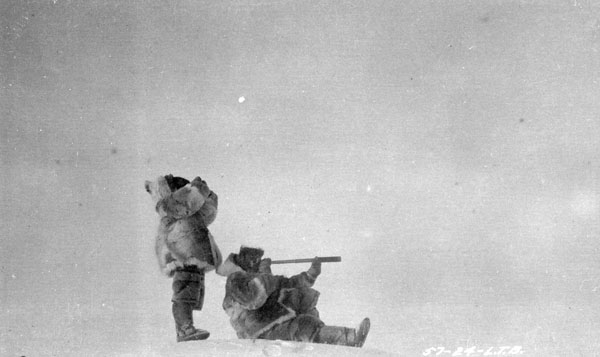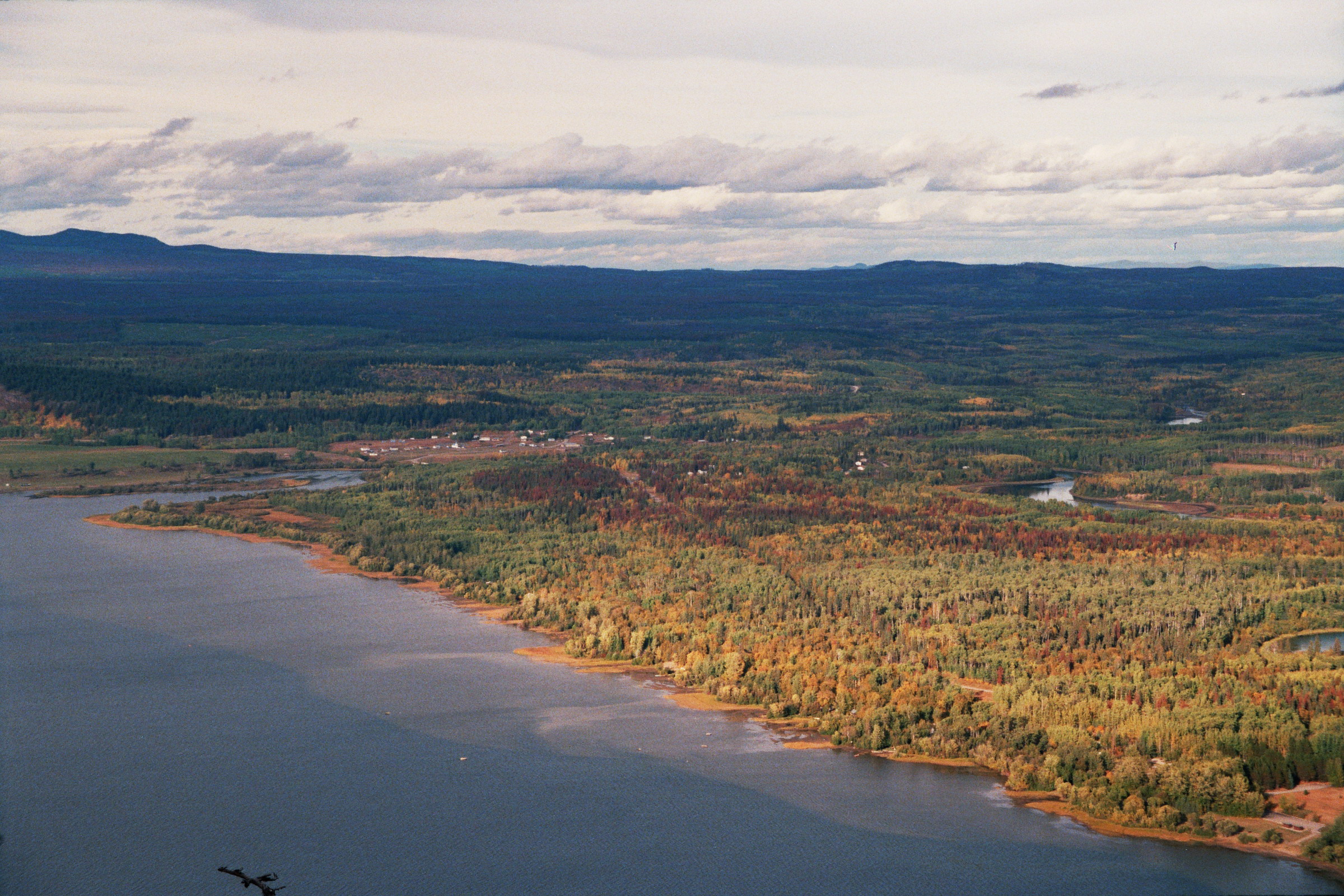Browse "Indigenous Peoples"
-
Article
First Nation Bands in Canada
Band is a term the Canadian government uses to refer to certain First Nations communities. Band governments are managed by elected councils according to the laws of the Indian Act. Today, some bands prefer to call themselves First Nations. As of 2020, the Government of Canada recognized 619 First Nations in Canada.
"https://d2ttikhf7xbzbs.cloudfront.net/media/media/b1d25a8e-f9d2-4cc7-bdc1-e76993685b0b.jpg" // resources/views/front/categories/view.blade.php
https://d2ttikhf7xbzbs.cloudfront.net/media/media/b1d25a8e-f9d2-4cc7-bdc1-e76993685b0b.jpg
-
Article
Peter Bostonais Pangman
Peter (or Pierre) Bostonais Pangman, Métis leader, bison hunter (born 20 October 1791 in the North Saskatchewan River Valley area, present-day AB; died 4 March 1850 in St. François Xavier, present-day MB). Peter Bostonais Pangman was a skilled hunter who helped provide much-needed bison meat to the Red River Colony. He was actively involved in the Pemmican Wars and events surrounding the Battle of Seven Oaks. As part of the Pembina fur trade, Pangman was a key figure who rallied and inspired the Red River Valley Métis to see and express themselves with an identity separate from surrounding Indigenous peoples. The name Bostonais is variously spelled Bastonnais and Bostonnais.
"https://development.thecanadianencyclopedia.ca/images/tce_placeholder.jpg?v=e9dca980c9bdb3aa11e832e7ea94f5d9" // resources/views/front/categories/view.blade.php
https://development.thecanadianencyclopedia.ca/images/tce_placeholder.jpg?v=e9dca980c9bdb3aa11e832e7ea94f5d9
-
Article
Sahtu Got'ine (Bearlake)
Sahtu Got'ine (also referred to as Sahtúot’ine, Sahtugotine and Great Bear Lake Dene) are Dene who live around Great Bear Lake in the Northwest Territories. They settled in Déline, which has been self-governing since 2016. (See also Indigenous Peoples in Canada.)
"https://d2ttikhf7xbzbs.cloudfront.net/media/media/f93e2568-b459-47c5-b6ae-9ceeedc6fa07.jpg" // resources/views/front/categories/view.blade.php
https://d2ttikhf7xbzbs.cloudfront.net/media/media/f93e2568-b459-47c5-b6ae-9ceeedc6fa07.jpg
-
Article
Beothuk
Beothuk (meaning “the people” or “true people” in their language) were an Indigenous people who traditionally inhabited Newfoundland. At the time of European contact in the 16th century, the Beothuk may have numbered no more than 500 to 1,000. Their population is difficult to estimate owing to a reduction in their territories in the early contact period. While it has been said that the Beothuk are now extinct, Mi’kmaq oral tradition denies this claim. Indigenous oral histories teach that the Beothuk intermarried with other Indigenous nations along the mainland after they had been forced out of their coastal territories by settlers. According to this perspective, Beothuk descendants live on in other Indigenous communities.
"https://d2ttikhf7xbzbs.cloudfront.net/media/media/5a96371d-c37d-49fd-a6da-ab62b28474d0.jpg" // resources/views/front/categories/view.blade.php
https://d2ttikhf7xbzbs.cloudfront.net/media/media/5a96371d-c37d-49fd-a6da-ab62b28474d0.jpg
-
Article
Bertha Clark-Jones
Bertha Clark-Jones (née Houle), OC, Cree-Métis advocate for the rights of Indigenous women and children (born 6 November 1922 in Clear Hills, AB; died 21 October 2014 in Bonnyville, AB). A veteran of the Second World War, Clark-Jones joined the Aboriginal Veterans Society and advocated for the fair treatment of Indigenous ex-service people. She was co-founder and first president of the Native Women’s Association of Canada. Clark-Jones devoted her life to seeking equality and greater power for women in Canada.
"https://d2ttikhf7xbzbs.cloudfront.net/media/home-page-images/Bertha-clark-jones.jpg" // resources/views/front/categories/view.blade.php
https://d2ttikhf7xbzbs.cloudfront.net/media/home-page-images/Bertha-clark-jones.jpg
-
Article
Billy Two Rivers
Billy Two Rivers (Kaientaronkwen), political leader, professional wrestler, actor, activist (born 5 May 1935 in Kahnawá:ke, QC; died 12 February 2023 in Kahnawá:ke, QC). Two Rivers’ Kanyen’kehà:ka (Mohawk) name was Kaientaronkwen. He was from the Kahnawá:ke Mohawk Territory, which is on the St. Lawrence River’s south shore, south of Montreal. While he learned English in school, his first language was Kanien'kéha (Mohawk).
"https://d2ttikhf7xbzbs.cloudfront.net/BillyTwoRivers/CP165873022_web.jpg" // resources/views/front/categories/view.blade.php
https://d2ttikhf7xbzbs.cloudfront.net/BillyTwoRivers/CP165873022_web.jpg
-
Article
History of Kainai Nation (Blood Tribe)
The Kainai, also known as the Blood or Kainaiwa, are one of three nations comprising the Blackfoot Confederacy. (The other two include the Siksika and Piikani.) The Kainai have a land base of 1,342.9 km², bordered on all sides by the Oldman, St. Mary and Belly rivers in Alberta. This entry provides a historical overview of the Kainai people; for more information about their reserve, society and culture, and modern community, please see Kainai Nation (Blood Tribe).
"https://d2ttikhf7xbzbs.cloudfront.net/media/media/f049f627-d2f7-4eaf-9c4f-db03980b55aa.jpg" // resources/views/front/categories/view.blade.php
https://d2ttikhf7xbzbs.cloudfront.net/media/media/f049f627-d2f7-4eaf-9c4f-db03980b55aa.jpg
-
Article
Indigenous Music Awards
The Indigenous Music Awards (formerly the Canadian Aboriginal Music Awards) were founded by Catherine Cornelius and Ron Robert in 1999 to recognize, honour, and celebrate the breadth of Aboriginal music making in Canada.
"https://development.thecanadianencyclopedia.ca/images/tce_placeholder.jpg?v=e9dca980c9bdb3aa11e832e7ea94f5d9" // resources/views/front/categories/view.blade.php
https://development.thecanadianencyclopedia.ca/images/tce_placeholder.jpg?v=e9dca980c9bdb3aa11e832e7ea94f5d9
-
Article
Cara Gee
Cara Gee, actor (born 18 July 1983 in Calgary, AB). Ojibwe actor Cara Gee started out in notable Toronto theatre productions before receiving an American Indian Movie Award and a Canadian Screen Award nomination for her lead role in the First Nations drama Empire of Dirt (2013). She then starred in CBC’s Strange Empire (2014–15) and Disney’s The Call of The Wild (2020). She is perhaps best known for her role as Camina Drummer on the popular science fiction series The Expanse (2015–22).
"https://d2ttikhf7xbzbs.cloudfront.net/Cara_Gee_-13-_38017549002_1.jpg" // resources/views/front/categories/view.blade.php
https://d2ttikhf7xbzbs.cloudfront.net/Cara_Gee_-13-_38017549002_1.jpg
-
Article
Kivallirmiut (Caribou Inuit)
The name “Caribou Inuit” stemmed from Europeans who took part in the Fifth Danish Thule Expedition (1921–24) and observed that the Kivallirmiut relied on caribou for food, clothing and shelter. Based on recent estimates, the Kivallirmiut today number about 3,000.
"https://d2ttikhf7xbzbs.cloudfront.net/media/media/d8c8c01c-6b29-4d24-bc35-05645ca9a904.jpg" // resources/views/front/categories/view.blade.php
https://d2ttikhf7xbzbs.cloudfront.net/media/media/d8c8c01c-6b29-4d24-bc35-05645ca9a904.jpg
-
Article
Carl Ray
Carl Ray, Cree artist, illustrator, editor and art teacher (born January 1943 in Sandy Lake, ON; died 26 September 1978 in Sioux Lookout, ON). Ray was known for his innovative paintings in the Woodlands style and was a founding member of the Indian Group of Seven. Ray’s work has influenced Indigenous art in Canada and can be found in the collections of various galleries and museums across the country.
"https://d2ttikhf7xbzbs.cloudfront.net/media/media/0c7246ce-04d4-4027-9907-07156a5ba0d6.jpg" // resources/views/front/categories/view.blade.php
https://d2ttikhf7xbzbs.cloudfront.net/media/media/0c7246ce-04d4-4027-9907-07156a5ba0d6.jpg
-
Article
Dakelh (Carrier)
Dakelh, also known as Carrier, are Dene people traditionally occupying areas in north-central British Columbia. The Carrier name derives from the former custom of a widow carrying the ashes of her deceased husband in a bag during a period of mourning, at which time a ceremonial distribution of goods released her of the obligation. The name is also an English translation of Aghele, the Sekani name for Dakelh people. They call themselves Dakelh (people who “travel upon water”), and add the suffixes -xwoten, “people of” or -t’en, “people” to village names or locations to refer to specific groups (e.g., Tl’azt’en, Wet’suwet’en). In the 2021 census, 4,730 people claimed to be of Dakelh ancestry.
"https://d2ttikhf7xbzbs.cloudfront.net/media/media/46e0fc31-7bbd-464d-a310-7783799def57.jpg" // resources/views/front/categories/view.blade.php
https://d2ttikhf7xbzbs.cloudfront.net/media/media/46e0fc31-7bbd-464d-a310-7783799def57.jpg
-
Article
Cayuga
The Cayuga (also known as Guyohkohnyo and Gayogohó:no', meaning “People of the Pipe” or “People of the Great Swamp”) are Indigenous peoples who have traditionally occupied territories along the northern shore of the St. Lawrence River and south into the Finger Lakes district of New York State. The Cayuga are one of six First Nations that make up the Haudenosaunee Confederacy.
"https://d2ttikhf7xbzbs.cloudfront.net/media/media/ac17518a-1788-42ab-9c72-0e9a64497c68.jpg" // resources/views/front/categories/view.blade.php
https://d2ttikhf7xbzbs.cloudfront.net/media/media/ac17518a-1788-42ab-9c72-0e9a64497c68.jpg
-
Article
Celebrating National Indigenous History Month in Canada
The history of Indigenous peoples in Canada begins much earlier than any other group living here — and is far more complex.
"https://d2ttikhf7xbzbs.cloudfront.net/media/media/c8645ca0-1fb2-4b94-8eaf-44c8d250e845.jpg" // resources/views/front/categories/view.blade.php
https://d2ttikhf7xbzbs.cloudfront.net/media/media/c8645ca0-1fb2-4b94-8eaf-44c8d250e845.jpg
-
Article
Charles Edenshaw (Tahayren)
Charles (Charlie) Edenshaw (Haida name, Tahayren), Haida chief, master artist (born 1839 in Skidegate, Haida Gwaii, BC; died 1920 or 1924 in Masset, Haida Gwaii, BC). Charles Edenshaw was among the first professional Haida artists. He was noted for his flawless execution of dynamic flowing forms in an otherwise strict and disciplined art tradition. Many of Edenshaw’s descendants also became artists, including his daughter Florence Davidson, his grandson Claude Davidson, his great-grandsons Reg and Robert Davidson and his great-great nephew Bill Reid.
"https://d2ttikhf7xbzbs.cloudfront.net/media/media/03ae8b68-09f7-4023-9d93-304e6b66d12a.jpg" // resources/views/front/categories/view.blade.php
https://d2ttikhf7xbzbs.cloudfront.net/media/media/03ae8b68-09f7-4023-9d93-304e6b66d12a.jpg
